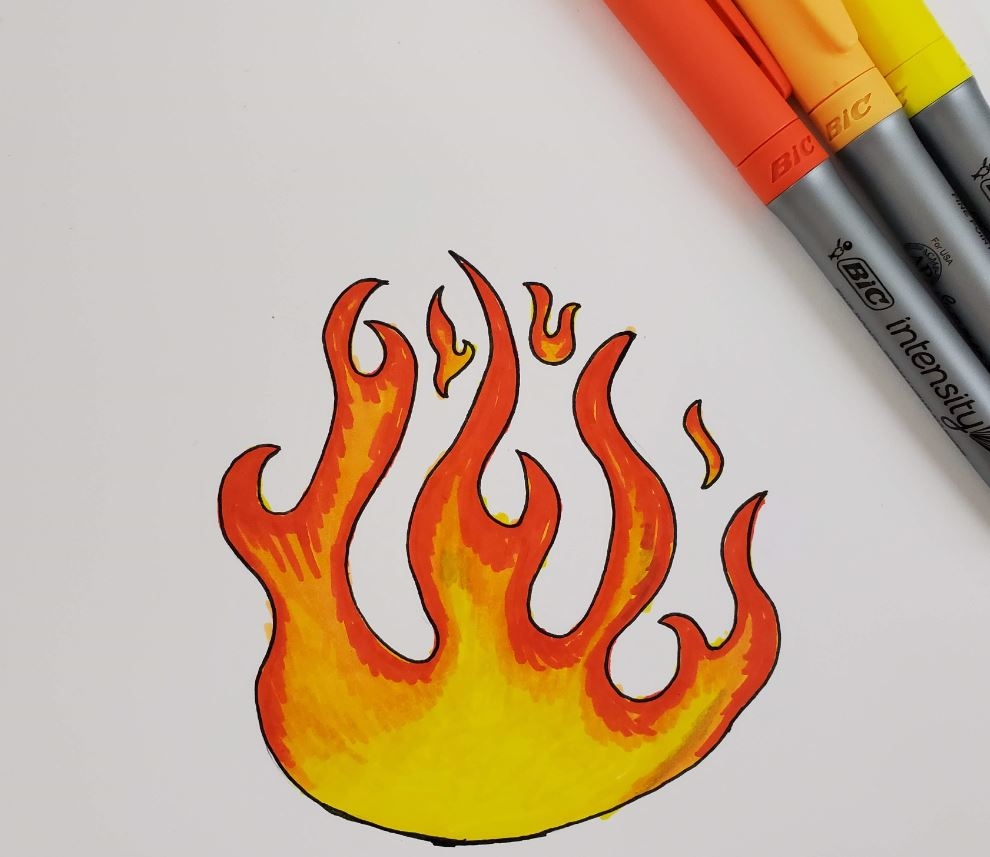Fire is a fascinating element that has captured the imagination of artists for centuries. Drawing a flame can be a fun and creative exercise that allows you to explore the dynamic and unpredictable nature of fire. In this article, we will provide you with step-by-step instructions on how to draw a realistic flame with simple techniques.
Before you begin drawing, it’s important to understand the basic shapes and movements of fire. Flames are often depicted as elongated teardrop shapes that flicker and dance in the air. By observing real flames or reference images, you can get a sense of the flow and movement of fire.
Start by sketching the outline of the flame using a light pencil. Draw a tapered shape that widens at the base and tapers to a point at the top. Add small wavy lines along the edges to create a sense of movement and flickering. Remember that flames are constantly changing shape, so don’t worry about making it too perfect.
Next, add some depth and dimension to your flame by shading. Use a darker pencil or charcoal to add shadows and highlights to the flame. Start by shading the base of the flame to create a sense of grounding. Then, gradually add darker tones along the edges and lighter tones in the center to create a sense of brightness and heat.
To enhance the realism of your flame, you can add some texture and details. Use a fine-tipped pen or pencil to add small lines and swirls to the flame, mimicking the intricate patterns of fire. Pay attention to the way the flame curls and twists, and try to capture that movement in your drawing.
Finally, add some finishing touches to your flame drawing. You can use colored pencils or pastels to add vibrant hues to the flames, creating a sense of warmth and intensity. Experiment with different colors and blending techniques to achieve the desired effect. Don’t be afraid to play around and have fun with your drawing!
In conclusion, drawing a flame can be a rewarding and creative experience. By following these simple steps and techniques, you can create a realistic and dynamic flame that captures the essence of fire. Remember to practice and experiment with different styles and approaches to find what works best for you. So grab your sketchbook and get ready to ignite your creativity!
